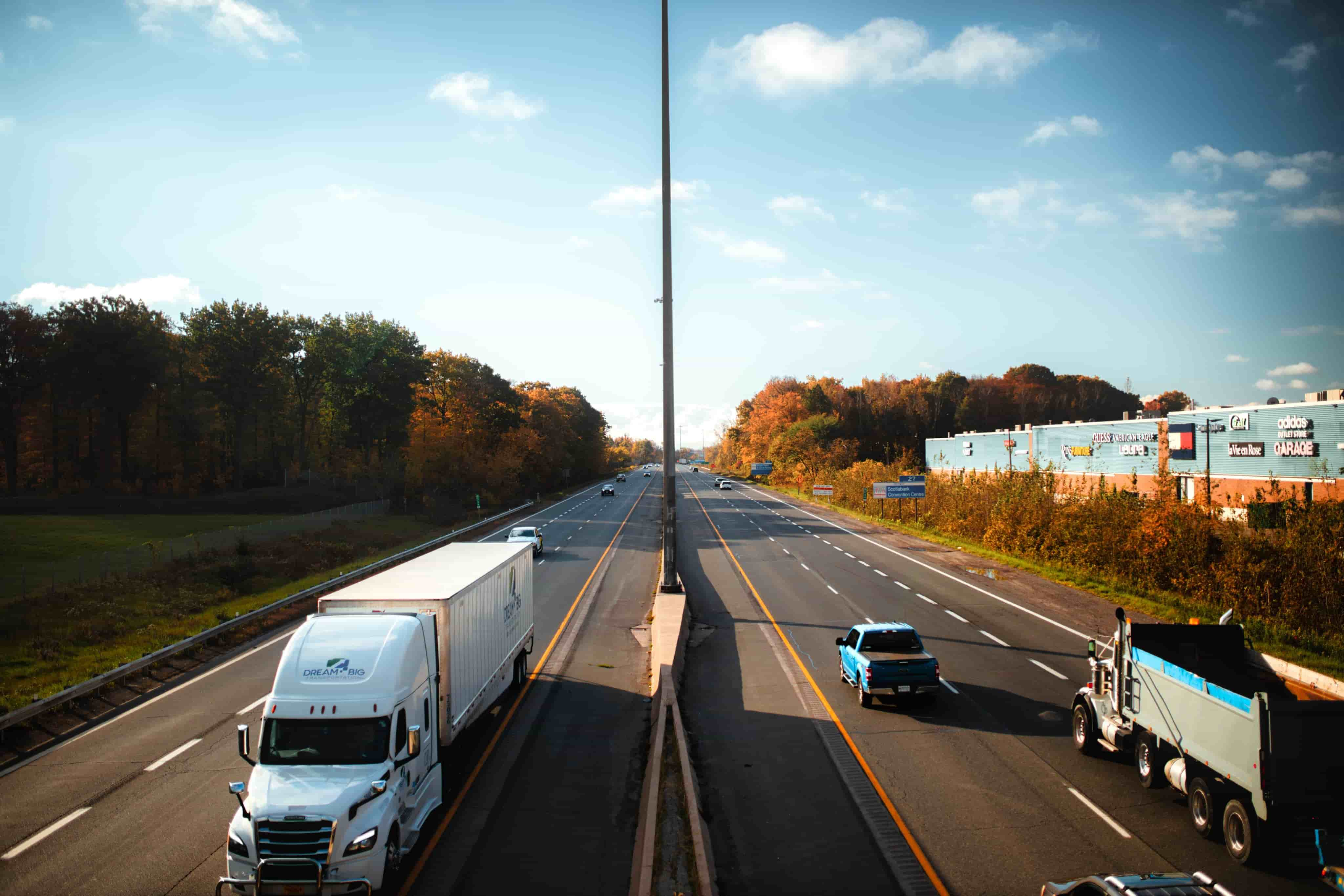
Most Common Freight Modes
Discover the essential freight modes for shipping your goods efficiently. From LTL and full truckload to air and intermodal rail, find the right mode for your business needs.
What are the most common freight modes? And what is a freight mode?! Freight modes are simply the different freight shipping transportation options available to you. Figuring out what freight transportation method is best for your shipment doesn’t have to make your head spin. Find out the most common freight modes and when you might choose them for your shipping needs.
Awards and Endorsements
- 2021, 2017 & 2016 Food Logistics’ Top Green Providers
- 2021 & 2018 Supply & Demand Chain Executives’ Pros to Know: Matthew Brosious
- 2020 & 2019 Top Food Logistics’ 3PL & Cold Storage Provider Award
- 2020 & 2019 Business Observer’s Top 500 Companies on the Gulf Coast
- 2020 & 2019 Business Observer’s Top 500 Companies on the Gulf Coast
- 2020 & 2017 Food Logistics’ Champions: Rock Stars of the Supply Chain
- 2020 Best of Palm Harbor Awards for Local Businesses
- 2017 Green Supply Chain Award from Supply & Demand Chain Executive
- 2017 Tampa Bay Business Journal Heroes at Work
- 2016, 2015, & 2012 Food Logistics Top 100 Software and Technology Providers
- 2013 Tampa Bay Business 100 by Tampa Bay Business Journal
- 2013 Top 100 Great Supply Chain Partners by SupplyChainBrain
- 2012 TIA Samaritan Award Honorable Mention
- 2012, 2011 & 2010 TBBJ Fast 50 Recipient
Most Common Freight Modes
If you run a small to medium-sized business, chances are that you will use the less-than-truckload (LTL) freight mode often. It’s one of the most popular ways to ship because of its cost-effectiveness and efficiency. In LTL, your shipment shares trailer space with other shippers’ cargo, making LTL like a ride share for freight. You’re only charged for the space your freight takes in the trailer and for the LTL freight rate of the cargo you’re shipping.
Because your cargo shares space with other shippers’ freight, there’s more frequent loading and unloading during transit.
You should choose the LTL freight mode if:
- Your packaged cargo weighs more than 150lbs but less than 10,000lbs.
- Your shipment doesn’t require the full trailer space.
- You’re shipping between 1-6 palletized or crated freight cargo.
- You want to save money on shipping rates.
For cargo that requires the full trailer space, has special equipment needs, requires temperature control or is oversized or very heavy, you will likely want to choose the full truckload freight mode. While full truckload shipping is not the least expensive shipping option, it requires no truck transfers like LTL shipping sometimes does. It’s also a faster shipping method because there are no stops during transit.
You might choose the full truckload freight mode if:
- Your freight shipment exceeds likely 10,000 pounds, depending on the commodity being shipped. In fact, your shipment could weigh more than 42,000lbs.
- You’re shipping 26-30 pallets.
- Your cargo requires refrigeration, climate control, flatbeds or other special accommodation or equipment for oversize or overweight shipments.
- Your cargo or commodities are unpackaged, such as produce.
You get a blend of LTL and full truckload shipping when you choose partial truckload shipping. In the partial truckload freight mode, you get the dedicated truck that moves fewer loads at once and handles all types of commodities. These include refrigerated items, temperature-controlled cargo, hazardous materials, and certain overweight or oversized goods.
You might choose the partial truckload freight mode if:
- You’re shipping between 6-18 pallets.
- Your shipments weigh between 8,000 to 27,000 lbs.
- You need the faster delivery times of full truckload shipping with the competitive LTL freight rates.

To create value for our customers by delivering customized shipping solutions that meet their unique needs and to fulfill shipping demands from simple to complex with expertise, guidance and ingenuity.
Rail shipping is a cost-effective and environmentally friendly transportation method that utilizes trains to move goods over long distances. It's known for its efficiency in handling large volumes of cargo, making it a sustainable and economical choice for businesses seeking reliable freight transport options.
Expedited shipping is a premium service designed to meet urgent delivery needs. It prioritizes speed and quick turnaround, ensuring that packages or goods reach their destination faster than standard shipping options. Expedited shipping is the go-to choice when time-sensitive deliveries are essential, providing businesses and individuals with reliable and prompt service for critical shipments.
White glove shipping is a premium service that goes beyond standard delivery, offering meticulous handling, specialized packaging, and in-home setup or installation for valuable or delicate items, ensuring a seamless and hassle-free experience for customers.
Less than truckload (LTL) shipping is a smart logistics solution for businesses with smaller shipments. It combines multiple smaller shipments into a single truckload, optimizing space and reducing costs. LTL shipping offers affordability and efficiency while ensuring timely delivery, making it an ideal choice for companies looking to save on transportation expenses without compromising on service quality.
While most shippers think trucks when it comes to freight shipping, there are other freight modes that might benefit you, too. In fact, cargo airlines or air freight carriers are specifically dedicated to handling the transport of cargo by air. Air freight usually has a higher density, and as you know, the denser the better when it comes to freight rates and the amount of space your freight takes up. Plus, air freight has fast transit times and can be a cost-effective solution for your freight.
You might choose air freight if:
- Your packaged cargo weighs more than 100 pounds.
- Your shipment is time-sensitive or requires fast transit time.
- You’re shipping internationally.
Have something to ship but looking for a greener way to ship it? Intermodal rail freight could be the solution you need. Commonly, intermodal rail freight is used to ship very bulky items, like construction equipment or hazardous materials. Because it can be costly to ship very heavy items by truck, shipping via intermodal rail freight can save you time and money. With railroad systems throughout the United States and Canada, rail freight carriers can get your cargo delivered to most places in North America.
Keep in mind that intermodal rail freight will need a truck to get the shipment from the rail hub to the final destination. However, the majority of the shipping is done by rail, making it a greener option because an intermodal train can move one ton of freight over 400 miles on just a gallon of fuel.
You might choose intermodal rail freight if:
- You’re shipping very large, bulky items, such as construction machinery or materials.
- You’re shipping certain hazardous materials.
- You want a greener shipping option for your long distance or heavy machinery shipping needs.
Shipping your freight across borders or internationally is made much easier with international shipping. If you’re shipping containers across the globe, you will probably use international shipping as part of your shipping strategy. There are different types of shipping loads for container shipping, which is separated by full-container loads (FCL) and less-than-container loads (LCL). However, you don’t have to ship a container to utilize this freight mode. You can also ship smaller, densely packed cargo. You may use ocean freight, rail freight, air freight or a combination of these in order to ship your cargo internationally.
Your business isn’t one size fits all, nor should your shipping solutions. A third-party logistics provider (3PL) like FreightCenter can help you decide on the proper freight mode for your shipment. You may need LTL shipping for specific loads, full truckloads for others, and air freight. No matter what, FreightCenter has the logistics expertise to help you find shipping solutions to make your business thrive.
With the basic knowledge of the most common freight modes in your back pocket, you’re ready to get shipping! Find the freight transportation mode that fits your shipping strategy and get your free online quote or call us at 800.716.7608 today!
Most Common Freight Modes FAQ
Q. What is the most commonly used freight transportation mode?
A. The most commonly used freight transportation mode in the U.S. is truck shipping. It’s favored for its quick delivery times over short distances and the ability to reach virtually any location. However, due to size and weight restrictions, truck shipping may have limitations regarding carrying capacity.
Q. What is the most common truck freight?
A. The most common truck freight is dry van. Dry van trailers are typically 53-foot enclosed boxes used to transport a wide range of products, such as consumer goods and electronics. Many drivers start their trucking careers with dry van freight due to its versatility.
Q. What are the five modes of transport?
A. The five modes of transport are road transportation, sea transportation, rail transportation, air transportation, and multimodal transportation. Each mode has unique advantages and applications depending on the needs of the cargo and destination.
Q. What are the 4 main types of freight transportation?
A. The four main types of freight transportation are road (ground), rail, ocean, and air. Each mode offers unique processes and benefits, catering to different shipping needs and distances.
We provide competitive freight shipping prices and an all-inclusive, easy-to-use shipping experience for our customers. Exceeding our customers’ expectations results in thousands of satisfied customer reviews and repeat business. We believe in the power of our customer relationships. Check out FreightCenter reviews from real customers, and learn what they have to say about their freight shipping experience!


